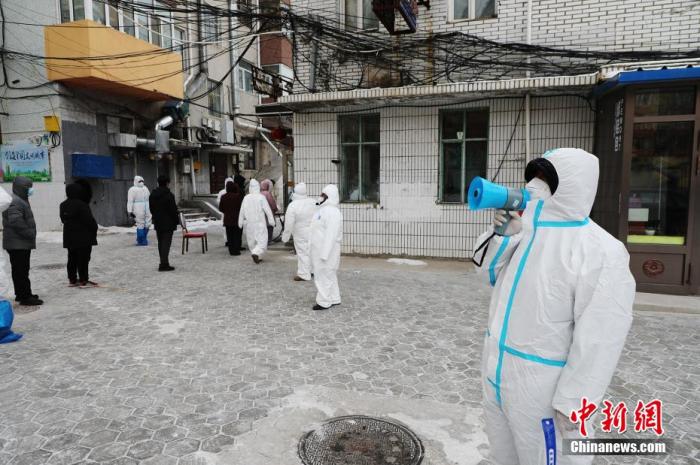Chinanews.com, November 30. Cui Gang, the second-level inspector of the CDC of the National Health Commission, said on the 30th that the virus genome sequencing results showed that the current epidemic in Inner Mongolia was not related to the previous local epidemic, and it was a new source of overseas input. The outbreak caused.
Data map: On November 29, in Manzhouli City, the staff guided the people for nucleic acid testing.
Photo by Wang Huayong
On the 30th, the Joint Prevention and Control Mechanism of the State Council held a press conference on further improving the situation of new coronavirus vaccination.
A reporter asked at the meeting: Recently there has been a local clustered epidemic in Inner Mongolia, which has attracted widespread attention. I would like to ask, what is the situation of the local epidemic?
Cui Gang said that recently, a local cluster of epidemics occurred in Hulunbuir, Inner Mongolia.
As of 24:00 on November 29, a total of 42 cases of infection have been reported in this epidemic, spreading to 2 provinces and 3 cities.
Among them, 39 cases were in Hulunbuir City, Inner Mongolia, 2 cases were in Tongliao City, Inner Mongolia, and 1 case was Qiqihar City, Heilongjiang.
The results of viral genome sequencing showed that this epidemic was not related to previous local epidemics, and it was an epidemic caused by a new overseas import source.
At present, there have been small clusters of cases in families, residential communities, and schools in Manzhouli City of Hulunbuir. The local epidemic has a high risk of community transmission, and the investigation of outflow risk personnel is in progress.
Cui Gang pointed out that after the outbreak, the National Health Commission and the National Disease Control and Prevention Bureau dispatched working groups to the local area for guidance. At present, various disposal tasks are being carried out vigorously and orderly. The local emergency response has been initiated in time and a flat command has been quickly established. System, implement prevention and control measures such as nucleic acid screening, flow traceability, medical treatment, community management and control, and risk personnel investigation, and strive to control the spread of the epidemic as soon as possible.

